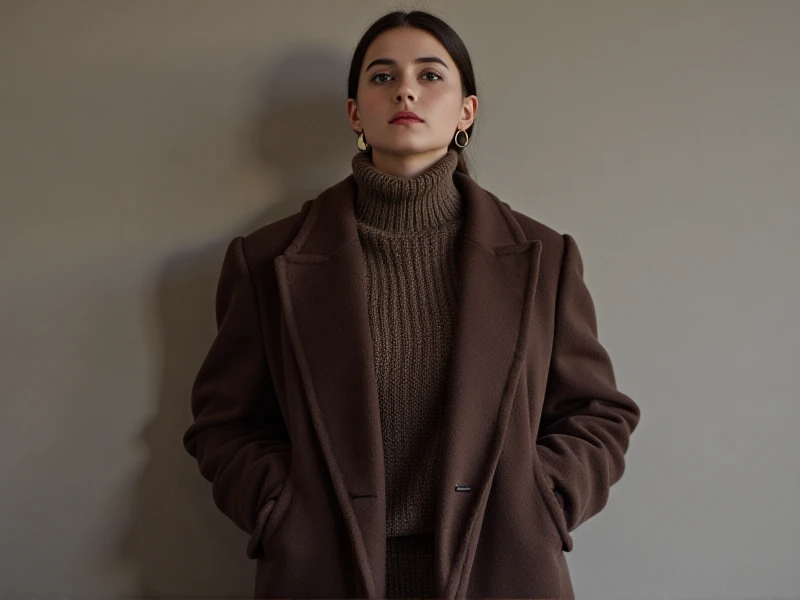The Essential Guide to Men's Overcoats: Classic Style for Winter
2025-06-07

The arrival of crisp winter air signals the return of a wardrobe essential for discerning gentlemen: the men's overcoat. Far more than mere protection from the cold, a well-chosen overcoat is the cornerstone of sophisticated cold-weather style. It elevates suits, smartens up chinos, and provides an instantly polished layer over casual knits. Finding your perfect men's overcoat is an investment in timeless elegance and enduring warmth.
Why Invest in a Quality Men's Overcoat?
Unlike fleeting fashion trends, a classic men's overcoat remains relevant season after season. Its core purpose – providing substantial warmth and shelter from wind and rain without excessive bulk – remains unchallenged. A high-quality coat acts as the finishing touch to your outerwear ensemble, projecting confidence and attention to detail. It bridges the gap between purely functional outerwear and true style statement.
Navigating Classic Men's Overcoat Styles
Understanding the subtle variations helps you select the perfect men's outerwear:
1. The Topcoat: The quintessential men's overcoat, typically falling between the knee and mid-calf. It's sleek, versatile, and designed to be worn over a suit jacket or blazer. Look for single-breasted styles with notched lapels for maximum adaptability. Navy, charcoal, and camel are timeless topcoat colors.
2. The Chesterfield: A formal classic. Longer than a standard topcoat (often calf-length), featuring a velvet collar, vertical pockets, and a subtle silhouette. Usually single-breasted with a hidden fly front. The epitome of understated luxury for city streets or events.
3. The Polo Coat: Originally a sporting coat, it evolved into a smart-casual staple. Characterized by its camel hair fabric (though wool versions exist), patch pockets, belt at the waist, and a distinctive raglan sleeve design. Offers a slightly more relaxed yet still refined look.
4. The Duffel Coat (or Duffel): Rooted in naval history, it features distinctive toggle fastenings instead of buttons, a broad hood, and robust fabric. Generally falling around mid-thigh. This style, especially in navy, offers a younger, more rugged take on the classic men's overcoat while maintaining warmth.
5. The Pea Coat: Technically shorter than most overcoats (ending at the hip), but deserves mention for its classic military heritage, double-breasted front, broad lapels, and heavy wool construction. Provides excellent warmth and structure for shorter winter days.
Choosing Your Fabric Wisely
The fabric defines the men's overcoat's warmth, drape, and feel:
Wool: The undisputed king for men's overcoats. Varies widely:
Melton: Dense, felted, weather-resistant, less prone to creasing.
Cashmere: Luxuriously soft and insulating, lighter weight but requires more careful care. Often blended. Defines premium men's outerwear.
Tweed: Textured, heavier, originating from Scotland/Ireland. Excellent for country settings but works well in cities too. Very durable.
Wool/Wool Blend: Offers affordability while maintaining good warmth and structure.
Cashmere Blend: Combines cashmere's softness with wool's durability and cost-effectiveness. A popular choice for refined men's winter coats.
Technical Blends: Some modern coats incorporate synthetic fibers for enhanced waterproofing or lighter weight, prioritizing function.
Finding the Perfect Fit
An ill-fitting men's overcoat ruins any outfit. Key considerations:
Shoulders: Seams should sit perfectly at the edge of your shoulder.
Sleeve Length: Should allow your suit jacket or shirt cuff to show (approx. 0.5 - 1 inch).
Body Fit: Need ample room underneath for at least a sport coat or thick sweater without being excessively baggy. When buttoned, it shouldn't pull tightly across the chest or back.
Length: Traditionally, a topcoat should cover your suit jacket. Aim for knee-length or slightly above for most versatility and proportional look.
Color & Versatility
Classic neutrals ensure longevity for your men's overcoat:
Navy: Universally flattering, pairs with virtually everything.
Charcoal Grey: Sophisticated and slightly softer than black, excellent for business wear.
Black: The most formal, impactful choice. Requires careful pairing to avoid looking overly stark.
Camel: Provides warm contrast, pairs exceptionally well with navy, grey, and brown tones. Becomes a statement piece.
Styling Your Men's Overcoat
Its versatility is key:
Over a Suit: The classic pairing. Choose complementary colors (e.g., charcoal overcoat with a navy suit).
Over Smart Casual: Throw over a turtleneck and tailored trousers for effortless refinement.
With Jeans and a Sweater: Elevates casual outfits instantly. A pea coat or duffel excels here.
Caring for Your Investment
Protect your men's overcoat to ensure it endures for years:
Brush regularly to remove surface dirt.
Air it out after wearing to prevent odors and allow moisture to dissipate.
Dry clean sparingly – 1-2 times per season, or only when genuinely soiled. Over-cleaning damages fibers, especially wool and cashmere.
Store properly on a broad, padded hanger during warmer months. Use a breathable garment bag.
Conclusion: Elevate Your Winter Wardrobe
A carefully selected, well-fitting men's overcoat transcends mere utility. It embodies timeless style, provides essential warmth, and offers unparalleled versatility. By understanding the styles, fabrics, fit rules, and care requirements, you can confidently choose an overcoat that becomes an indispensable part of your winter wardrobe, elevating every ensemble you wear it with. Choose wisely, care for it attentively, and yours will serve as a cornerstone of sophisticated style for many winters to come. Explore classic men's outerwear designs to discover your perfect winter essential.
Category: